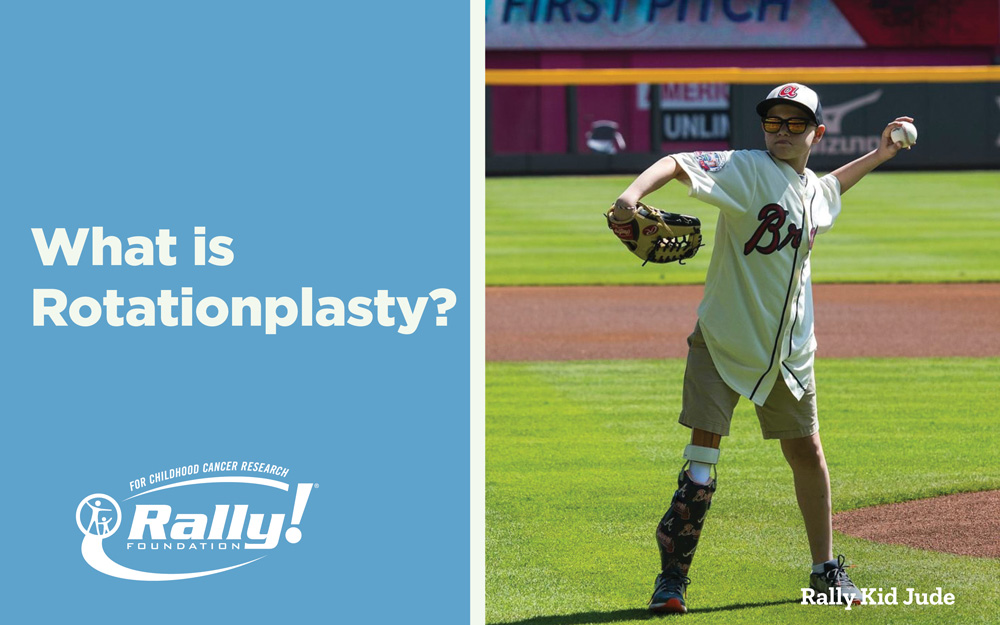What is Rotationplasty?

Rotationplasty is a type of autograft that generally provides greater function than a standard above-the-knee amputation or limb salvage surgery. Rotationplasty gives a child a greater chance of participating in competitive sports.
Ankle Serves as Knee Joint
During this radical operation, the surgeon removes the affected part of the leg including the cancerous tumor near the knee. Then the lower section of the leg (shin bone, ankle and foot) is rotated 180 degrees so that the foot points backwards. The surgeon reattaches that part of the leg to the remaining thigh bone. As a result, the ankle now serves as a replacement knee joint. The patient will wear a prosthesis on their foot.
Still Growing
Since osteosarcoma strikes children and teenagers more frequently than adults, the rotationplasty procedure is more common among this age group. Surgeons have found that they are better candidates for this surgery because their bones are still growing and make allowances for growth when doing the surgery.
In some cases, rotationplasty is also performed on patients who suffer from congenital leg deformities, knee infections due to prostheses, and traumatic leg injuries.
Post-surgery
It takes 3-6 months before the leg heals after rotationplasty. If your child receives chemotherapy after surgery, the healing may take longer. During this time, the patient wears a cast on their leg, and may need a wheelchair or crutches.
Physical therapy is a vital part of the recovery. It helps with regaining strength and flexibility and teaches the patient how to use the new ‘knee joint’. After the leg heals, your child can start wearing his or her prosthesis, which will need to be replaced as your child continues to grow.
Watch this short video from MD Anderson Cancer Center on rotationplasty for a visual understanding.
If your child or teenager is considering rotationplasty, reach out to Rally and we can put you in touch with other rotationplasty families.
